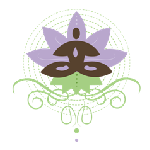Attention deficit disorders are affecting a large number of children in schools and at homes. The majority of these children are males, who are subject to a host of interventions, most prominent among the use of psychotropic drugs. Despite the lack of evidence on the safety of drug interventions in children, a study by Zito (2003) showed that 5.3-6.9% of children in a cross-sectional study were being prescribed psychotropic drugs, an increase of 2-3 fold in the 10-year period before 1996 and a percentage that has undoubtedly grown since this study. Our young people are largely ignorant about alternative ways to handle their emotions, fears, and longings.
The integrative approach of Therapy & Yoga was created by Nisha Bhatt during her research work and is carried through her current practice. Parents of kids and teens with special needs has multiple challenges to maintain the family dynamic and struggles with keeping up with multiple appointments. The approach created by Nisha is providing fusion of conventional therapy and Yoga in the luxury of own home which is eventually integrated into families. This approach can be initiated as early as toddler age.
When initiating this approach for a child or family, it is new and challenging to most of the students, the majority of whom has never participated in a Yoga class. The central goal of this therapy approach is to help kids learn how to get in touch with and access inner resources in order to deal with disturbances in the outer environment. The child is given a break time during the therapy session and this time used to perform meditation and Yoga. With this approach, kids are completing sessions more peacefully, happily and quietly. In this relaxed and unguarded state, the kids and teens seem childlike, open, and engaging. Their tough exteriors melt for an extended period of time.


Leave A Comment